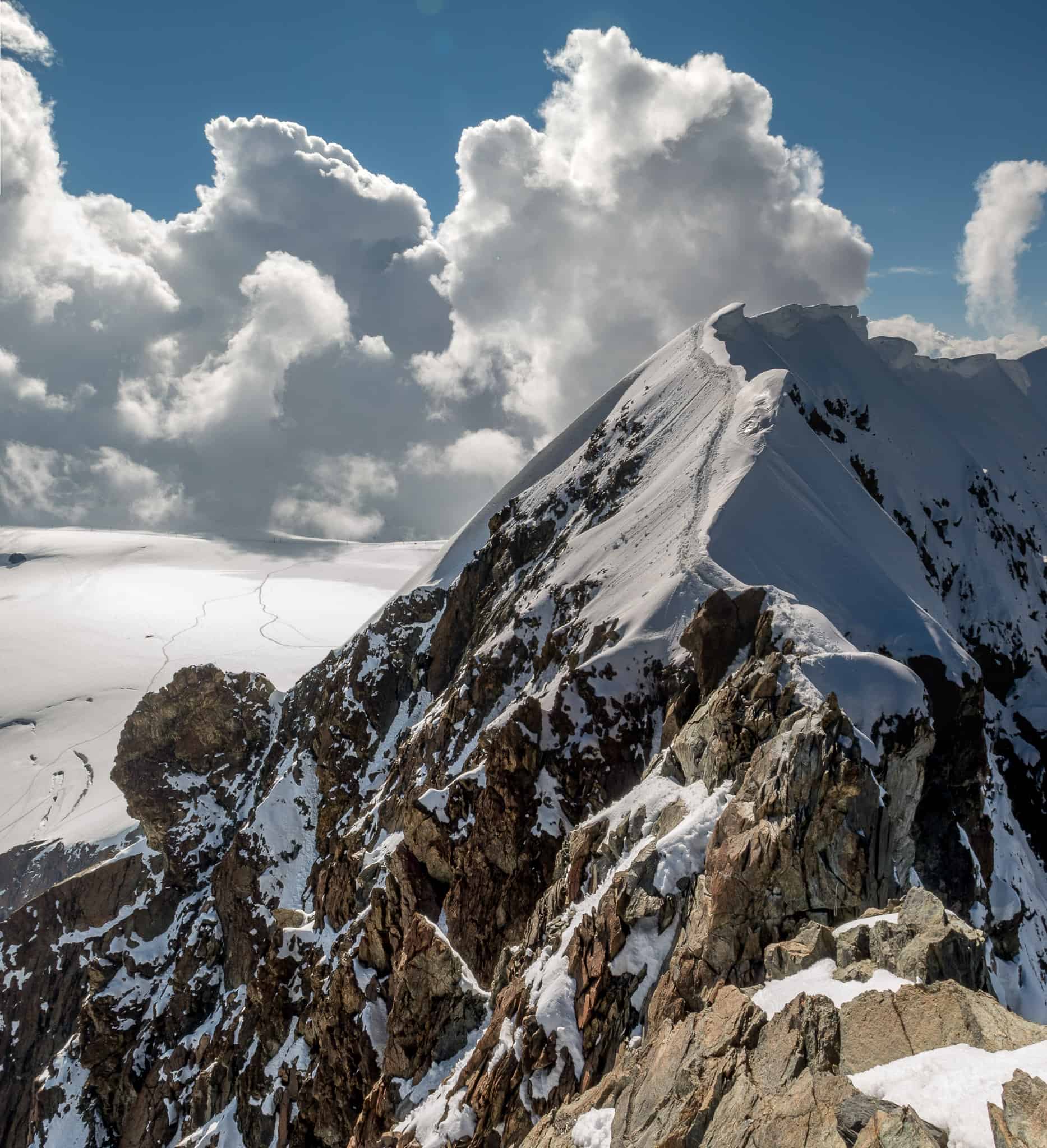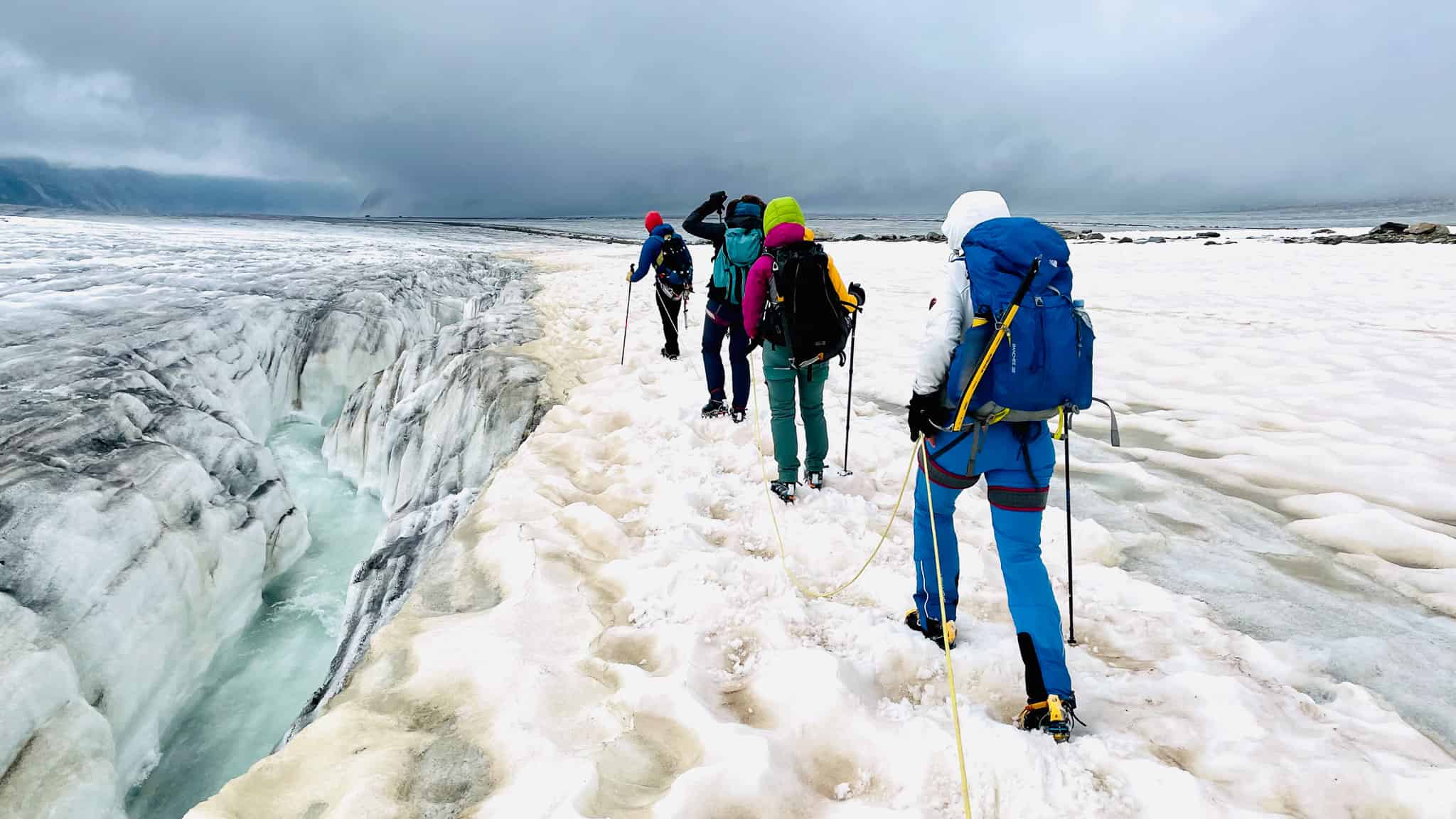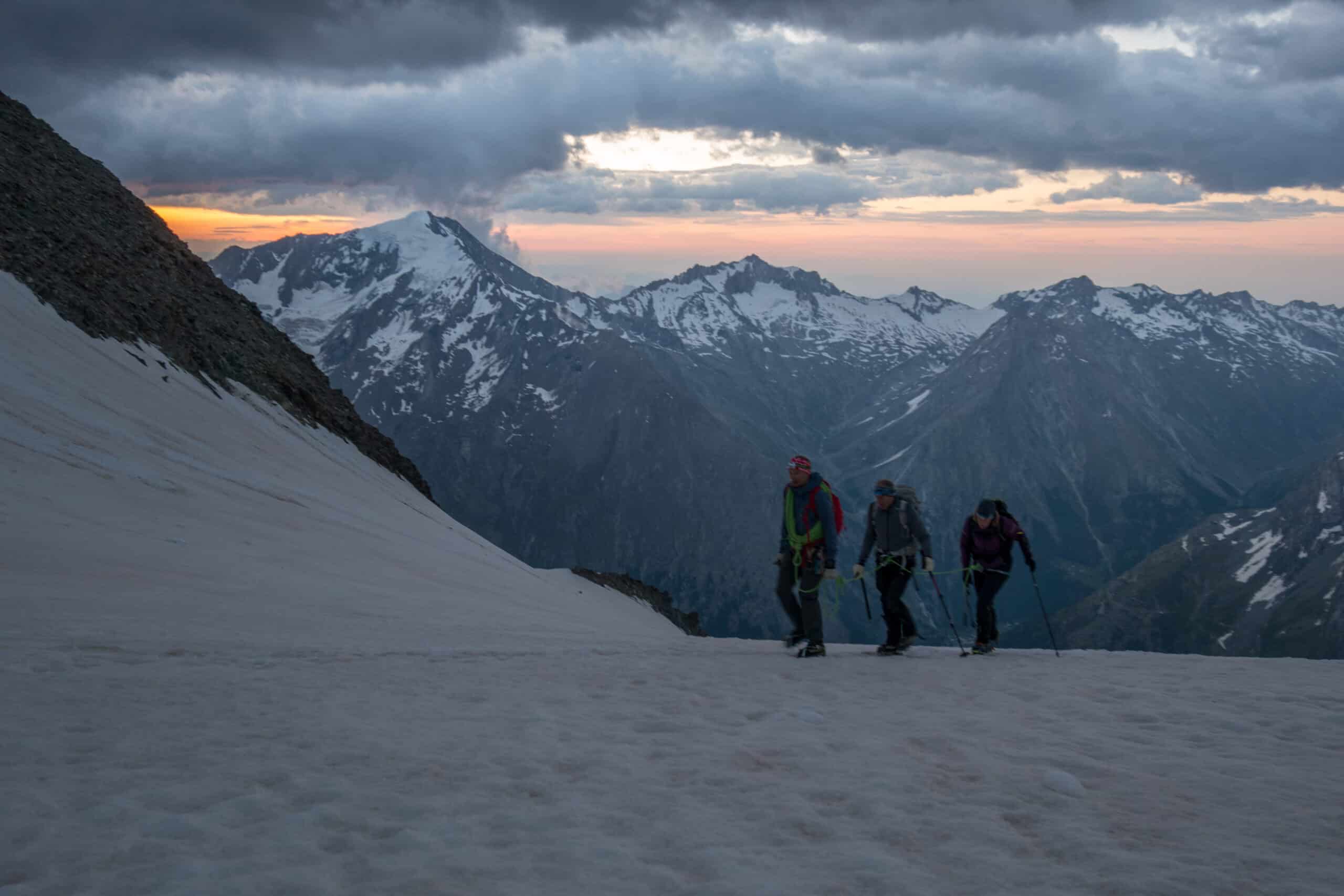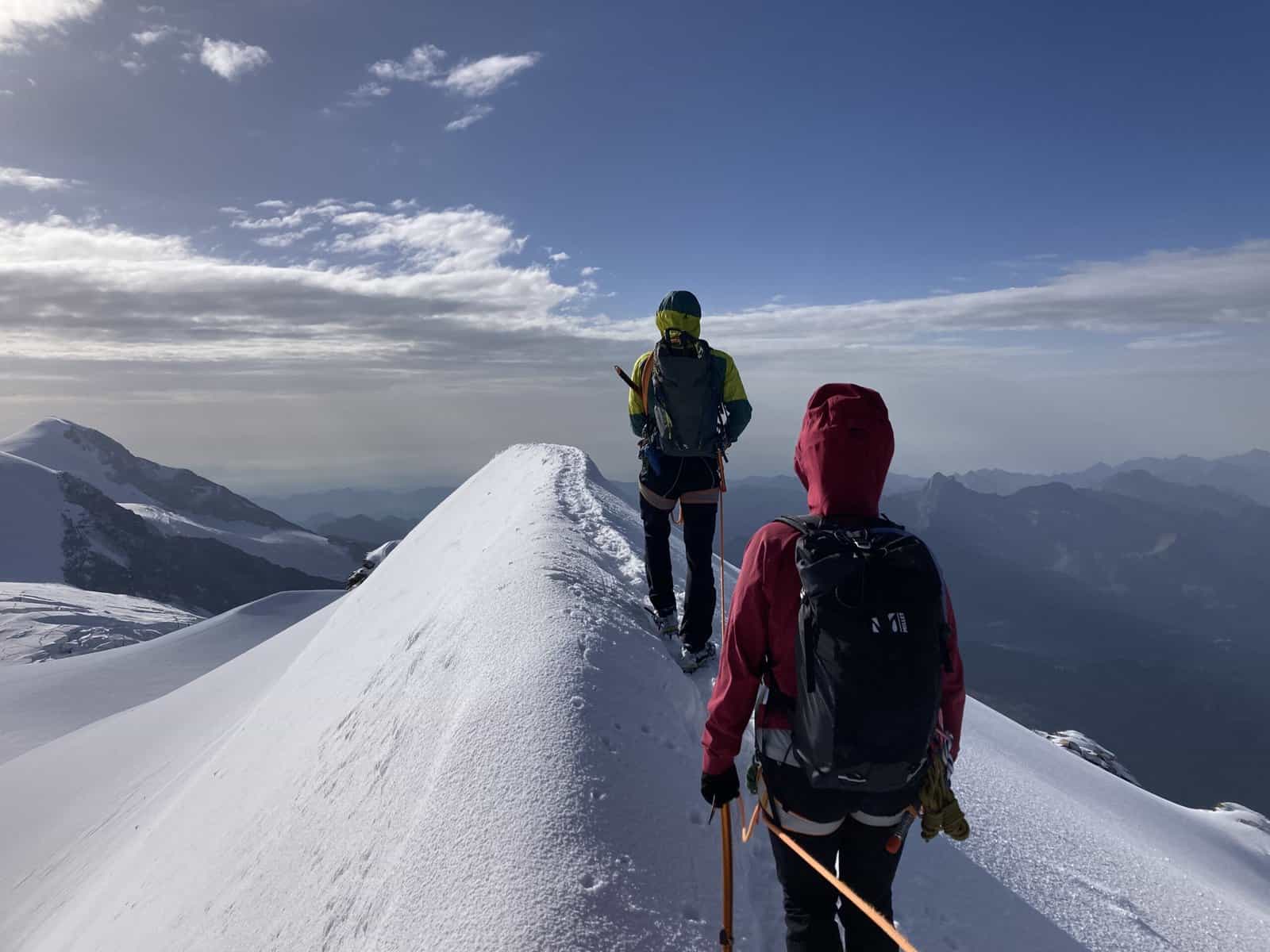Filters
Guided high altitude tours with Swiss mountain guide
Spaghetti tour, Matterhorn, Vrenelisgärtli, with us you will get on your favourite tour. Alpine tours in Switzerland with motivated mountain guides.
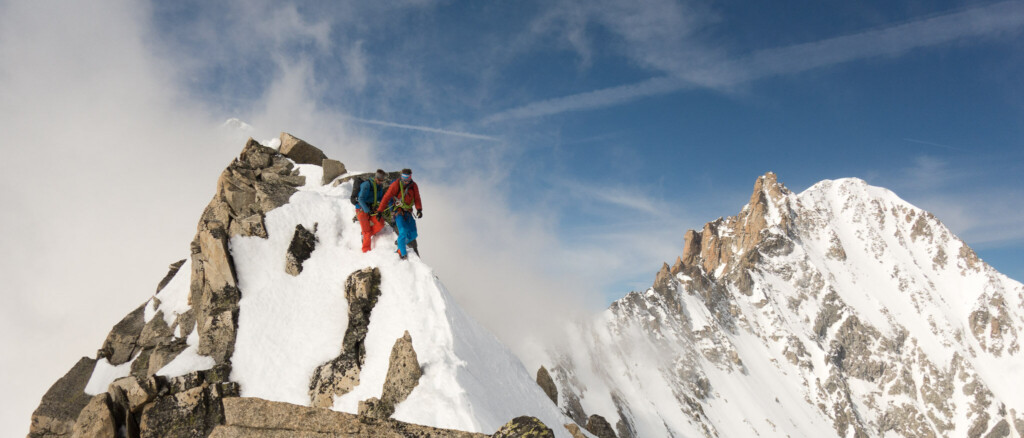
High Altitude Tour | Mönch and Jungfrau with Mountain Guide
High altitude tour on the divide between green lowlands and white, glaciated high mountains.TechnicsEnduranceTo the offer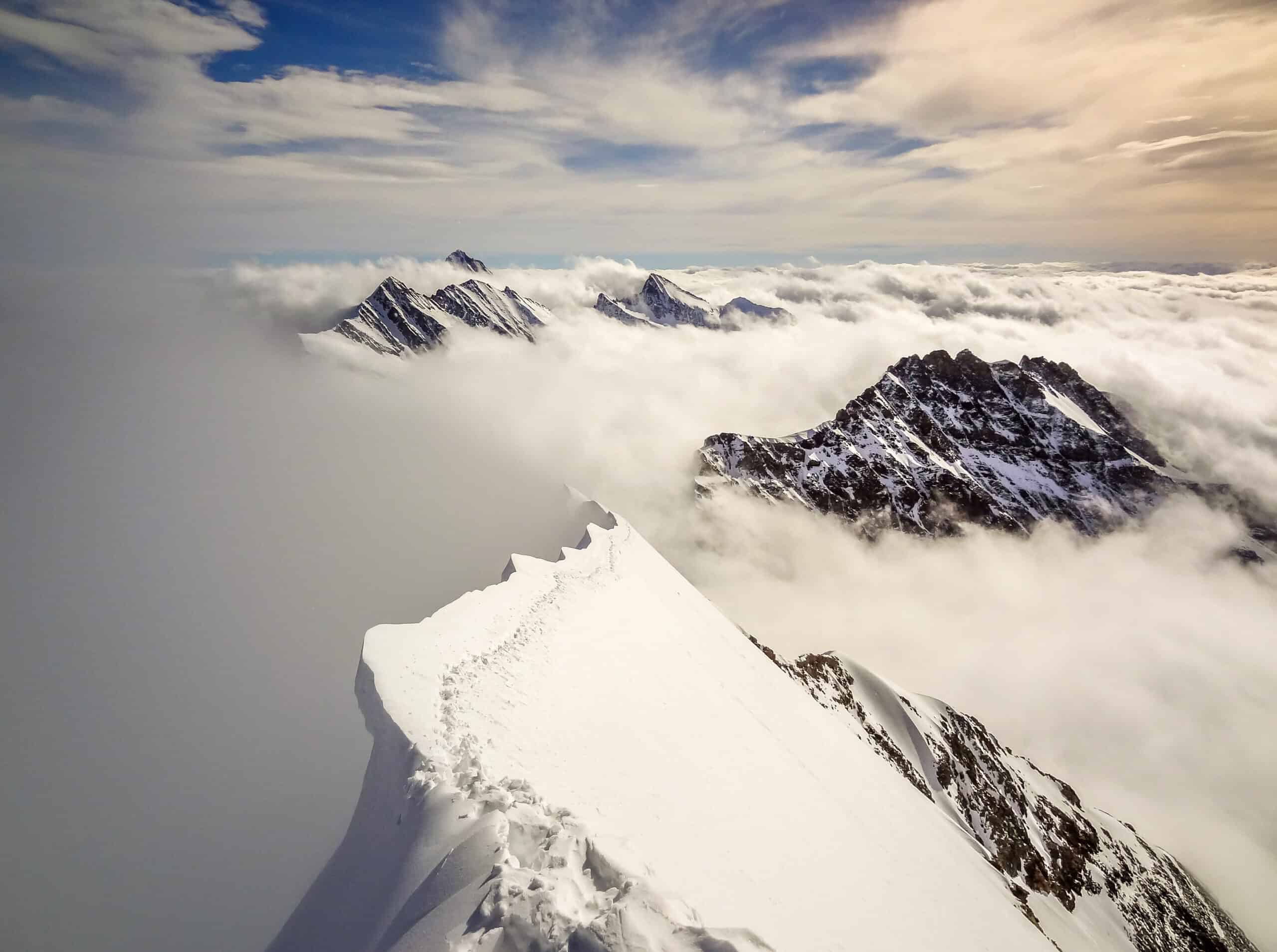
High Altitude Tour | Spaghetti Tour | Crossing of the Monte Rosa Massif at over 4000m with Mountain Guide
High altitude week with many 4'000m peaks, imposing glaciers, high mountains and fine pasta in Italian hutsTechnicsEnduranceTo the offer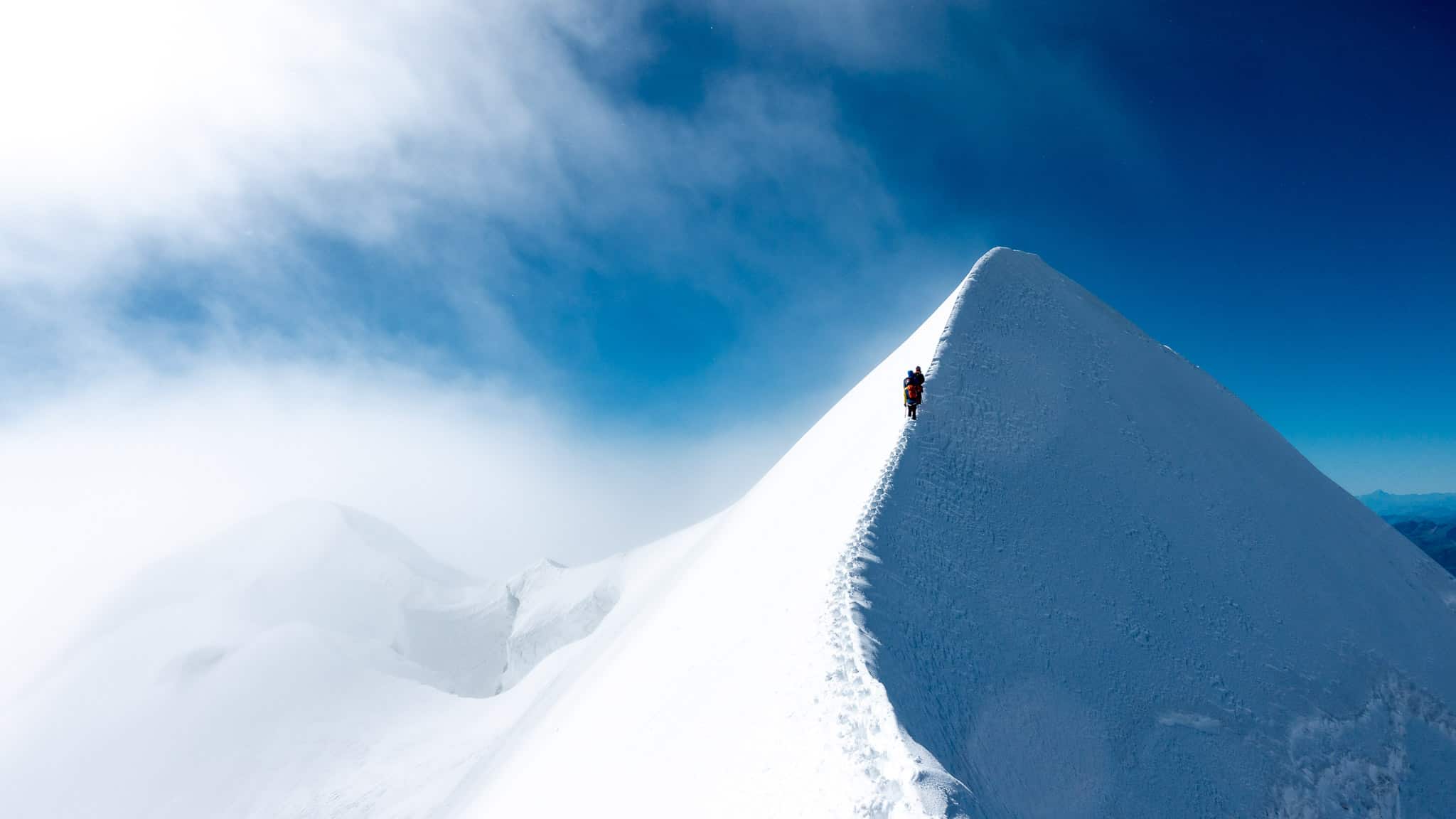
Alpine Tour | Pollux and Breithorn Crossing
Two days of high-altitude touring together on 6 peaks above 4000 metres with a view down to Zermatt.TechnicsEnduranceTo the offerAletsch Glacier Trekking
Across the largest Swiss glacier from the Bernese Oberland to the Valais.TechnicsEnduranceTo the offerAlpine Tour | Nadelhorn with Mountain Guide
Varied high tour to a prominent 4000m peak over a huge glacier, a pretty firn ridge and a cool rocky ascent.TechnicsEnduranceTo the offerHigh Altitude Tour | Crossing of the Sustenhorn with Mountain Guide
An easy high-level tour over a large glacier with a short, easy climbing section.TechnicsEnduranceTo the offerHigh tour Monte Rosa | Spaghetti Tour light with mountain guide
Over gigantic glaciers together on easy 4,000 metre peaks and up to the highest mountain hut in Europe!TechnicsEnduranceTo the offer
Interested in other tours?
Take a look at the complete offerNothing that suits you?
Do you prefer to travel in your own group? Book a private tour with us and enjoy and benefit from our professionals on the mountain.
Any questions about High Altitude Tours ? ¿
What is a high altitude tour (definition)?
A high-altitude tour is a mountain tour in the high mountains. The high mountains are characterised by glaciers, snow and rocks. You are always travelling in open terrain, i.e. without a path. You are travelling on rock, snow or ice (combined terrain). The aim of an alpine tour is usually to reach a summit, but traversing the high mountains with the motto "The journey is the reward" is just as beautiful. Technical equipment such as ropes, ice axes and crampons are often needed to make high mountain ascents safe (crevasses, exposed terrain, climbing passages). A somewhat more detailed discussion you can find on Wikipedia.
What is considered a high altitude tour?
A tour is considered an alpine tour as soon as you are on combined terrain, i.e. rock, snow and ice. On an alpine tour, you move on glaciers and snowfields. Compared to hikes, high altitude tours take you off the beaten track and require technical equipment such as ropes, ice axes and crampons.
High altitude tours can be quite easy. There are glaciers that are flat and have few crevasses, so the ascent is not very demanding. The Sustenhorn for example, is an easy high-altitude tour. On somewhat more demanding high-altitude tours, a climbing section or a somewhat steeper passage must be mastered. Here is the Alphubel over the Feekopf a good example. Of course, there are also long and difficult high-altitude tours. The Schreckhorn is considered the 4,000 metre peak with the most difficult normal route in Switzerland.
At what point does one speak of "high alpine"?
High alpine area belongs to the high mountains and is a type of landscape characterised by snow cover and glaciers. By definition, high alpine terrain protrudes at least 1000m. High alpine terrain is characterised by distinct terrain forms, such as glaciers, rock faces, steep slopes, summit ridges and peaks.
How do I plan a high altitude tour?
The planning of high altitude tours is complex, because many different points have to be taken into account. In doing so, one applies the 3×3 scheme and takes into account the conditions, the terrain and the people. We impart this knowledge in our courses and go on our tours gladly respond to this topic.
Here is a very rough outline of how the three most important points are addressed:
Conditions:
- The current Weather can be accessed on the usual meteoapps. In summer, special attention is paid to thunderstorms and rapidly changing weather conditions.
- The current snow situation can be checked with webcams, Snow maps and phone calls to the local lodge can be determined.
- The current situation of the crevasses can be seen via photos of Tour portals or by telephone calls to the local lodges.
- In addition, the Leaflet from Y+S "Meteo" grandiose.
Terrain:
- Primarily, the detailed maps help to plan tours.
- Apps like FatMap, Swiss Topo or Google Earth are very helpful.
- Images on the Tour portal from the SAC or current tour reports support the preparation.
People:
- Who is coming, what are the skills of the individual participants?
- Who leads the group?
- What is the group constellation like and what kind of group dynamic processes can arise?
- The material for each individual and as a group should be available.
How dangerous are high altitude tours?
There is no doubt that there are dangers in the high mountains. But these can be minimised and reduced to a small risk. Our mountain guides are sensitised to the dangers in the high mountains and put safety first. A small residual risk always remains. The beauty of the Swiss mountains makes this residual risk look relatively small.
How is the difficulty of alpine tours classified?
The alpine tours are classified as a whole with a scale from L (easy) to SS (very difficult). In addition, the climbing difficulty according to UIAA is often added with Roman numerals. For example, you will find many alpine tours with climbing difficulties of III). The following document provides detailed information. Also on the SAC page you can find more information.
What equipment is needed for a high altitude tour?
You can find our packing list for high altitude tours in here.
What is the difference between high altitude touring and high altitude mountaineering?
High-altitude mountaineering is a completely different world to the classic alpine tours in Switzerland. High-altitude mountaineering starts at around 6,000 metres above sea level and requires the body to acclimatise to the altitude over a longer period of time. At altitude, the oxygen content is lower and the body needs time to acclimatise. From 8,000 metres above sea level, you reach the death zone, where the body can no longer regenerate.
Do I have to be sure-footed and free from vertigo for a high-altitude tour?
Surefootedness is important and can be learned. Moving on a high-altitude tour gives routine, you get used to the terrain and become more sure-footed.
A head for heights is not mandatory for all tours. Easy tours often lead over gentle terrain. On more demanding tours, a head for heights is mandatory. A head for heights can also be trained. This has its origins in fear of heights. Fears can be gradually reduced through positive experiences. Also the fear of heights.
You can always like to contact usto discuss which tour is suitable for you.
How many 4000m peaks are there in Switzerland?
In Switzerland there are 48 official 4,000s. An elevation counts as a summit if the embrasure height (also known as prominence) is at least 30 metres. In the case of independent mountains, the embrasure height must be between 100 and 300 metres. In the Alpine region there are 82 Summit above 4,000 metres above sea level. These are located in Switzerland (48), Italy (37) and France (26). Many peaks are border peaks and therefore belong to several countries.
What is the advantage of a guided high tour?
There are several advantages of a guided tour:
Training
Our mountain guides are super trained and ensure the highest level of safety on the tours. Safety always has top priority on our tours.
Organisation
We take care of the organisation of a tour or a course from A to Z. You just register and we take care of the accommodation, tour itinerary and travel. If the conditions are very bad, we will reschedule the tour or choose a place with better conditions. You register and can enjoy the organised programme.
Training
Our mountain guides are didactically top and always open to teach you new techniques and tactics. In our courses we always impart the latest knowledge and divide the content into meaningful topics. You can learn a lot and gain a lot of experience with us.
Demanding tours
We are happy to accompany you on a challenging tour that you would otherwise not dare to do. Whether we lead the whole tour and you can enjoy the safety and nature, or whether we are there as coaches and show you how to handle the route as a team and thus help you progress, is entirely your decision. Our team includes technically strong mountain guides who are happy to lead you through difficult tours.
What is a rope team?
A rope team is a team of people who connect with a rope on a mountain tour in order to travel safely in the mountains. On a glacier, you form a rope team to be able to catch a possible crevasse fall. A rope team can consist of two to eight people. On climbs, the lead climber belays by attaching the rope to safe points on the mountain, thus preventing a person following behind from falling. When climbing, one travels in rope teams of two to three people.
When do you need a mountain guide?
You need a mountain guide if you want to tackle a tour for which you have too little knowledge or which you do not want to organise yourself. We have a detailed explanation here listed.
Does Bergschaft also offer privately guided high altitude tours?
On our Offer pages you will find group tours. Anyone who is interested in the respective offer can register for these tours. On private tours you can choose your offer as you like and with exactly the group you want. For private tours you are welcome to Contact us.
Do you have any other questions?
If you have any further questions or would like to chat with us, please feel free to contact us. You can find our contact details here.
